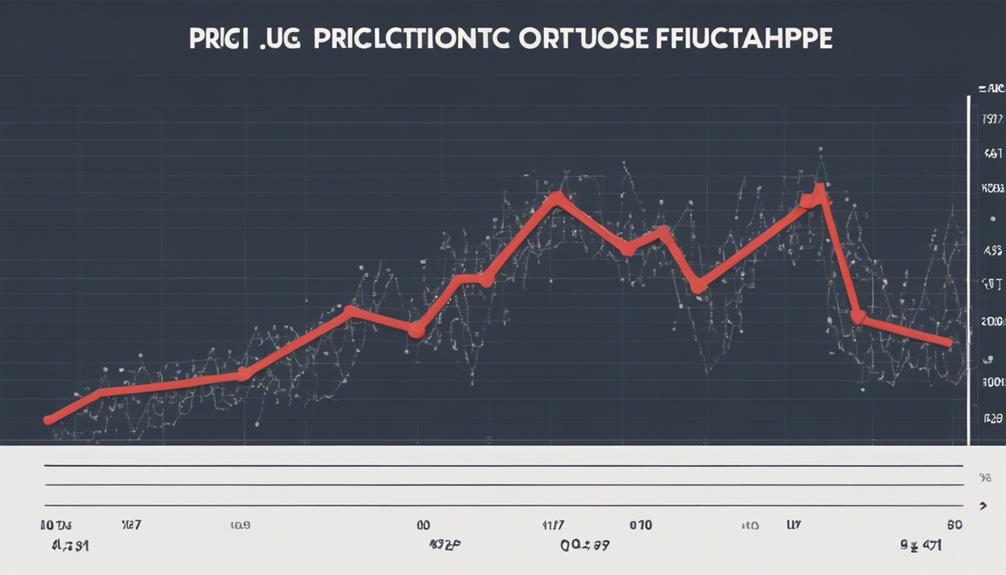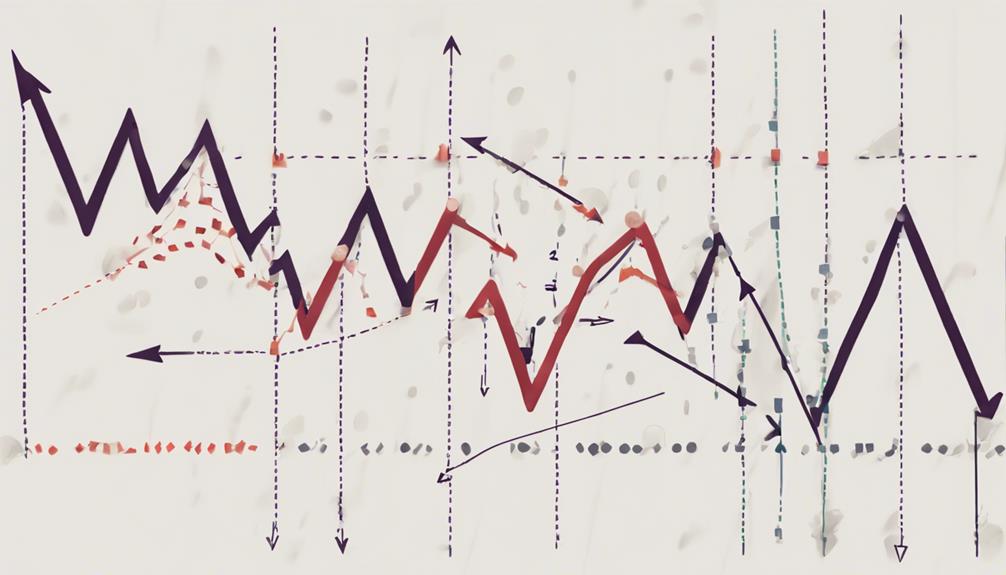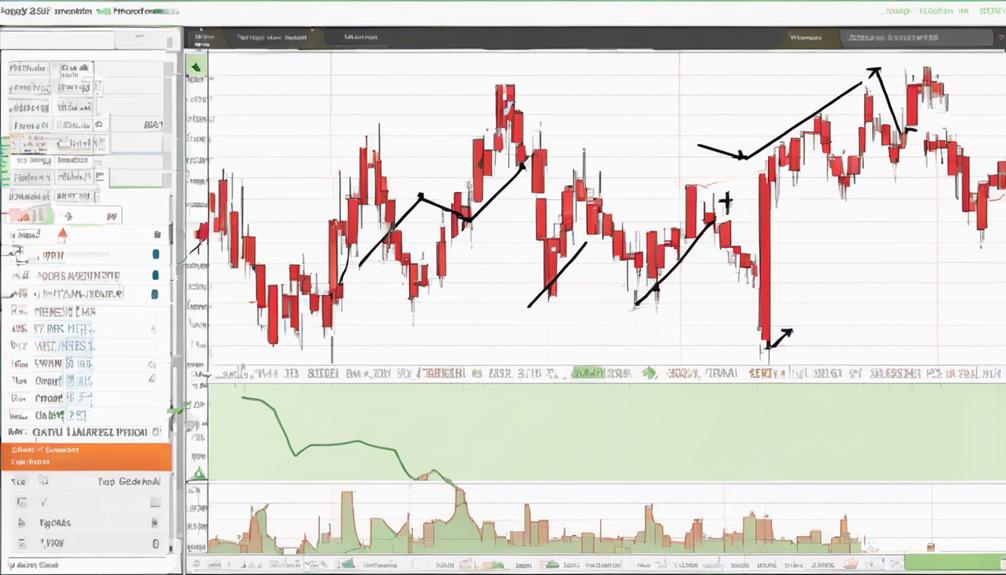In the realm of financial analysis, the Zig Zag Indicator stands as a beacon for traders navigating the complexities of price movements. Its ability to simplify trends and pinpoint crucial market junctures offers a valuable edge in decision-making.
However, the true power of this indicator lies not just in its simplicity but in the strategic integration with complementary tools. By exploring the practical applications and nuances of the Zig Zag Indicator, a deeper understanding of its predictive capabilities can be unraveled, paving the way for more informed and strategic trading approaches.
Zig Zag Indicator Explained
The utilization of the Zig Zag Indicator in technical analysis serves as a potent tool for discerning pivotal price movements amidst market fluctuations. Traders rely on this indicator to simplify price chart analysis by connecting significant highs and lows. By filtering out market noise, the ZigZag Indicator highlights key price movements, aiding in trend identification. This adaptive tool redraws lines to reflect changing market conditions, enabling traders to identify potential reversal zones and trend directions on price charts.
The Zig Zag Indicator allows traders to customize settings, adjusting the sensitivity and accuracy of the indicator to suit their trading strategies. This customization feature enhances the flexibility of the ZigZag Indicator, making it a versatile tool for traders across various markets. By focusing on crucial price levels and smoothing out minor fluctuations, the Zig Zag Indicator provides traders with a clearer picture of market trends, enabling more informed trading decisions.
Understanding Zig Zag Calculation

Building upon the foundation laid by the Zig Zag Indicator Explained, the process of understanding Zig Zag calculation involves setting a percentage change threshold to identify significant price movements. Traders have the flexibility to adjust this threshold percentage based on the specific asset being analyzed and prevailing market conditions.
The ZigZag Indicator is designed to provide dynamic updates by continuously comparing current prices with past highs or lows, enabling the detection of significant changes in the market. This calculation method marks key chart points where substantial price shifts occur, forming a distinctive zigzag pattern that aids in trend analysis.
Key Points:
- Setting Threshold Percentage: Traders define a percentage change threshold to identify significant price movements.
- Dynamic Updates: The ZigZag Indicator adjusts with new price data to accurately reflect market shifts.
- Comparing Prices: It compares current prices with past highs or lows to detect notable changes in the market.
Practical Application of Zig Zag

Exploring the practical applications of the Zig Zag Indicator reveals its efficacy in identifying optimal entry and exit points for traders through precise trend analysis and price movement interpretation. By recognizing potential reversal zones and major price movements, traders can make informed decisions.
Customizing the Zig Zag settings allows for adjusting the indicator's sensitivity, providing flexibility based on market conditions. Establishing support and resistance levels with Zig Zag assists in determining strategic entry and exit points, enhancing trading strategies.
Moreover, integrating the Zig Zag Indicator with moving averages further refines its effectiveness in price prediction, offering a comprehensive approach to market analysis. This integration provides traders with a more robust tool for decision-making, combining the strengths of both indicators for improved accuracy in forecasting price movements.
Strategies With Zig Zag Indicator

Utilizing the Zig Zag Indicator in trading strategies offers a versatile tool for identifying trend direction, potential reversal points, and optimizing trade entry and exit decisions. When using this indicator, traders can consider the following strategies:
- Confirmation with Other Indicators: Combining the Zig Zag Indicator with other technical indicators can help confirm trade signals and strengthen the overall analysis process.
- Setting Stop-Loss and Take-Profit Levels: Utilizing the Zig Zag Indicator can assist traders in setting appropriate stop-loss and take-profit levels based on potential reversal points and trend strength indications.
- Analyzing Trend Strength and Volatility: The Zig Zag Indicator can be used to assess the strength of a trend and adjust trading strategies according to market volatility. Additionally, analyzing multiple timeframes with the indicator can provide a comprehensive view of price movements.
Limitations and Advantages of Zig Zag

An analysis of the Zig Zag Indicator reveals both its limitations and advantages in informing trading decisions. While the Zig Zag Indicator is considered a lagging indicator, potentially leading to delayed signals, it serves the crucial function of filtering out market noise, allowing for clearer trend identification.
To mitigate its lagging nature and reduce false positives, traders are advised to use the Zig Zag Indicator in conjunction with other indicators to confirm signals. One significant advantage of the Zig Zag Indicator is its adaptability to different timeframes, providing traders with flexibility in their analysis. However, users should exercise caution due to its tendency to redraw trend lines, necessitating careful interpretation of signals.
How Can the Simplified Zig Zag Indicator Help with Price Prediction and Profit Maximization?
The simplified zig zag indicator is a powerful tool for profit maximization in trading. By analyzing price movements and identifying trend reversals, it can help predict future price movements with greater accuracy. This enables traders to make informed decisions and maximize their profits in the market.
How Can the Simplified Zig Zag Indicator Help with Price Prediction for Profit Maximization?
The simplified zigzag indicator can assist with profit maximization by helping traders identify potential trend reversals and price fluctuations. By using the zigzag indicator, traders can make more informed decisions when entering and exiting trades, ultimately leading to improved profitability and better price prediction for successful trading.
Can the Zig Zag Indicator be Used for Both Price Prediction and Swing Trading?
The Zig Zag Indicator can be utilized for both price prediction and swing trading using zig zag. It identifies support and resistance levels, helping traders to spot potential trend reversals. For swing trading, it can signal entry and exit points, making it a valuable tool for short-term trading strategies.
Frequently Asked Questions
What Is the Best Setting for Zigzag Indicator?
The optimal setting for the ZigZag indicator involves a depth of 12, deviation of 5, and backstep of 3. Customizing these parameters based on market conditions and asset volatility can enhance its effectiveness in trend identification and price prediction accuracy.
How Do You Calculate Zigzag Indicator?
To calculate the ZigZag Indicator, compare current prices with recent highs and lows. Identify swings that exceed a specified percentage threshold. This method detects significant price changes, creating a zigzag pattern on charts for traders to analyze market trends accurately.
What Is the Zigzag Line Strategy?
The Zigzag Line Strategy is a tactical approach in trading that leverages the ZigZag Indicator to pinpoint pivotal price junctures, aiding in trend reversal identification and strategic decision-making based on price fluctuations.
What Is the Zigzag Price Pattern?
The Zigzag price pattern is a technical analysis tool that connects major price highs and lows to identify trend reversals. By filtering out minor price movements, it helps traders visualize market trends and potential reversal points.
Conclusion
In conclusion, the Zig Zag Indicator serves as a valuable tool for traders seeking to navigate market trends and turning points. By simplifying price movements and filtering out noise, this indicator offers clarity in trend analysis.
When combined with the ROC indicator, Fibonacci retracements, and Elliott Wave patterns, a comprehensive market analysis can be achieved.
In the world of financial markets, having the right tools at your disposal can make all the difference in sailing through turbulent waters.
